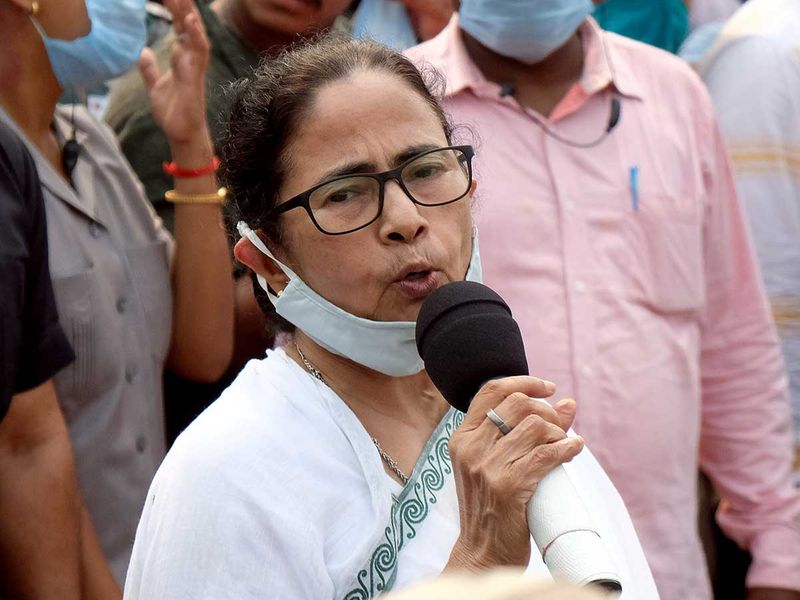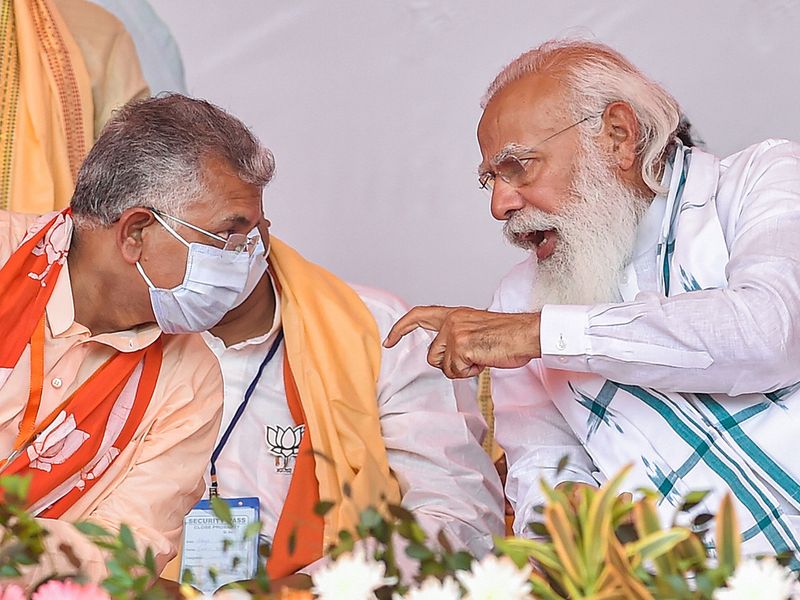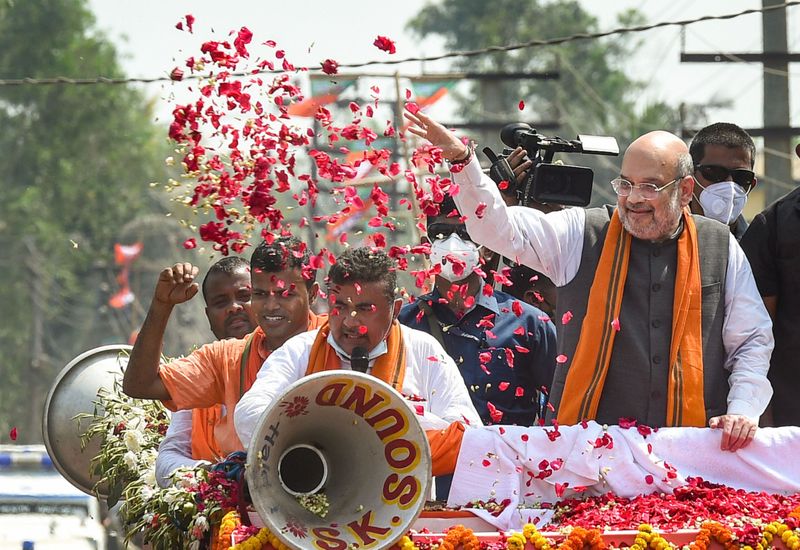Kolkata: In less than 24 hours from now, the EVMs (electronic voting machines) will be opened at counting centres all across West Bengal to determine the verdict of the people for the 292 seats in the state assembly (polling was withheld in two seats due to the deaths of candidates, from COVID-19).
On Sunday, May 2, along with West Bengal, votes will also be counted for elections held in three other states – Assam, Kerala, Tamil Nadu – and one Union Territory, Puducherry. However, undoubtedly, the nation’s attention will be focused primarily on the Bengal results because no other state election in India in living memory has seen the kind of 'eye-for-an-eye' that Bengal has in the run-up to these elections and even during all eight phases of polling, from March 27 to April 29 – the longest elections ever in any state in India.
Possibility of hung assembly
And quite in keeping with the mixed bag of results predicted by the median of all exit polls conducted on the last day of polling on April 29, both the ruling Trinamool Congress (TMC) and its principal opponent in the state, the Bharatiya Janata Party (BJP), have claimed to coast to victory on May 2.
While a majority of exit polls have shown that the balance is tilted in favour of TMC retaining power, no one worth their salt in Bengal politics right now is absolutely sure of a win – no matter the swagger in public.
An objective analysis of the exit poll results in fact show the possibility of a hung assembly in the state for the first time since 1971. For almost 50 years, Bengal never threw up a fractured verdict, keeping the winning party or bloc always head and shoulders above the nearest opposition entity. In fact, in these five decades, not even once did the Opposition bench manage a three-figure mark. The closest being the 88 seats won by Congress and the other opposition parties in 1996 against the ruling Left Front.
In that sense, the tension and excitement this time around on either side of the political divide is quite palpable. There is an element of unpredictability about these election results that is very much uncharacteristic of Bengal.
Mamata-Suvendu on an even keel

While Dilip Ghosh, the president of the state unit of the BJP, said in Kolkata on Friday that he was “absolutely sure of BJP winning a comfortable majority”, TMC supremo and Chief Minister Mamata Banerjee conducted a video conference with all her party candidates the same day, reminding them of the strategy to be followed on counting day and at the counting centres. However, some political observers are of the opinion that Mamata’s meeting was actually aimed at delivering a not-so-tacit message to the TMC candidates just ahead of D-Day, reminding them to stay loyal to the party and not fall prey to any kind of poaching by the BJP should the results turn out to be a cliff-hanger.

And no one probably knows it better than Mamata how close it may well get, this time round, with one exit poll showing Mamata herself only marginally ahead of BJP candidate and her former political aide Suvendu Adhikari in the prestigious Nandigram seat.
BJP’s phenomenal success
While BJP stalwart and federal Home Minister Amit Shah, who masterminded the BJP campaign in Bengal this time, has repeatedly claimed that his party will win more than 200 seats, if exit polls are anything to go by then it is unlikely that his party’s tally will get that far. However, the very fact that from a paltry three seats in the last assembly elections in Bengal in 2016 to now looking at a tally of more than 100 is indeed a phenomenal success for the saffron brigade. And that too in a state where a right-wing party like the BJP and its erstwhile parent organisation Jan Sangh were always reduced to mere footnotes in the history of the electoral politics.

That way, even if BJP fails to come to power in Bengal, its stupendous rise to prominence within a span of seven years – starting with the 2014 Lok Sabha elections when the party had its highest-ever 34 per cent vote share in the state – makes for a fascinating case study of rising right-wing sentiment in the world’s largest democracy.
Interestingly, poll strategist Prashant Kishore, who had been hired by Trinamool Congress for these elections, had proclaimed about two months ago that if BJP manages to touch the three-figure mark in Bengal this time, he will quit Twitter. Going by the trend thus far in these elections, Kishore’s days on the micro blogging site indeed look numbered!
“There’s one thing I’m pretty much sure about – that on May 2 [the day of results] Corona will come to power in Nabanna [the state secretariat]!”
‘Corona will come to power’
A couple of weeks ago, while participating in a televised debate, Kolkata-based Dr Diptendra Sarkar, in alluding to how an entire eight-phase electioneering in the state was happening under the dark and ominous shadow of a pandemic, had made the following comment: “There’s one thing I’m pretty much sure about – that on May 2 [the day of results] Corona will come to power in Nabanna [the state secretariat]!”
He probably couldn’t have been any closer to the truth. It is indeed ironical, almost to the point of being a dark comedy, that for an election campaign and electioneering that had seen such an unprecedented trail of gore and such a horrifying four-five months of point-counterpoint steeped in a lexicon of hate, the end is turning out to be quite an anti-climax.

A pyrrhic victory
From front pages of newspapers to prime-time television shows, from the chatter at the corner grocery store to dinner-table banter, it is the rising number of COVID-19 positive cases and the accompanying death toll in the state and all across India that is now front and centre.
Election news or the speculative splitting of hair that usually characterises the intervening days and hours between the last day of polling and the day of the results has taken a backseat for now. The air of anticipation over who will form the next government and occupy the high seat at Nabanna has been replaced by voices of concern, worry and fear as the state announced an indefinite partial lockdown from late Friday evening to counter a massive spike in COVID-positive cases.
Until reports last came in late on Friday night, Bengal’s tally of daily COVID-19 cases had reached 17,403 amid news of a general atmosphere of squalor, uncertainty and a pall of gloom over shortages of hospital beds, lack of adequate oxygen cylinders and long queues for elusive vaccines outside state and private hospitals.
Under such circumstances, even a hard-fought election win after so many weeks and months of back-breaking campaigning in the early-summer heat may ultimately appear pyrrhic. And that is a sign of the times – ‘This is the way the world ends, not with a bang but a whimper,’ as T.S. Eliot would say!
from World,Europe,Asia,India,Pakistan,Philipines,Oceania,Americas,Africa Feed https://ift.tt/3vOeaYz
No comments:
Post a Comment